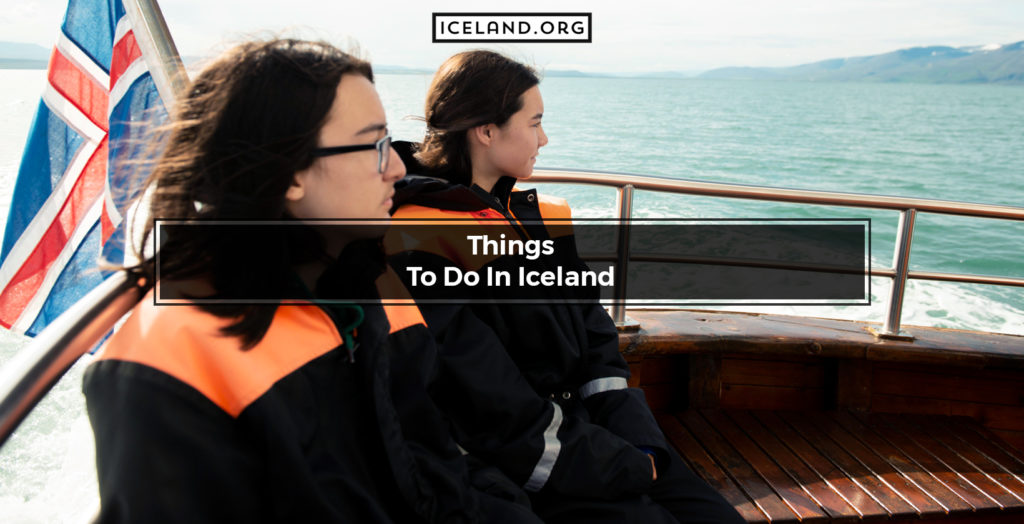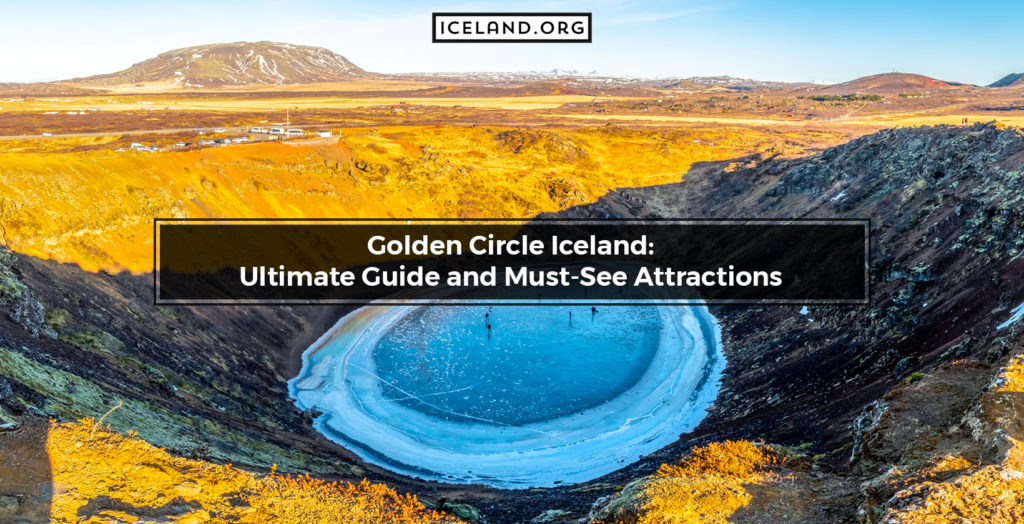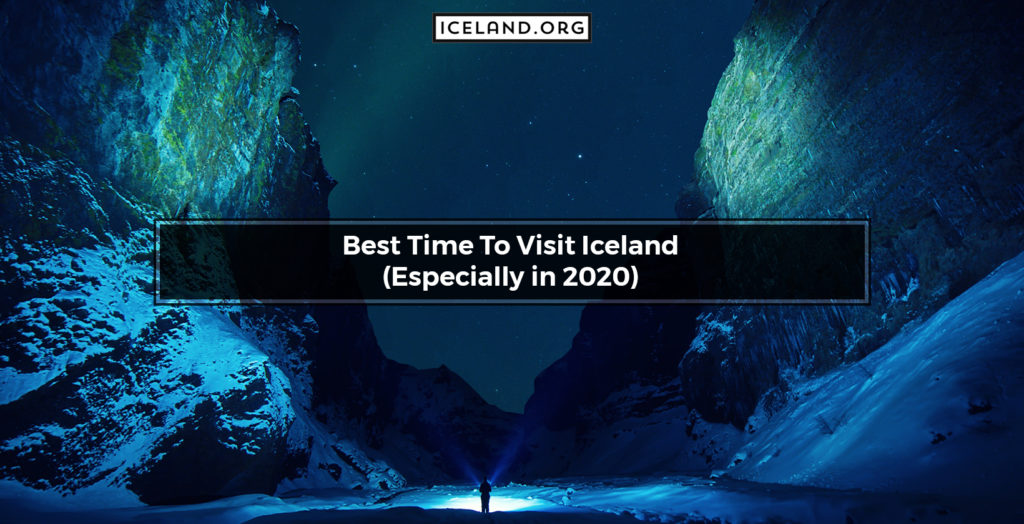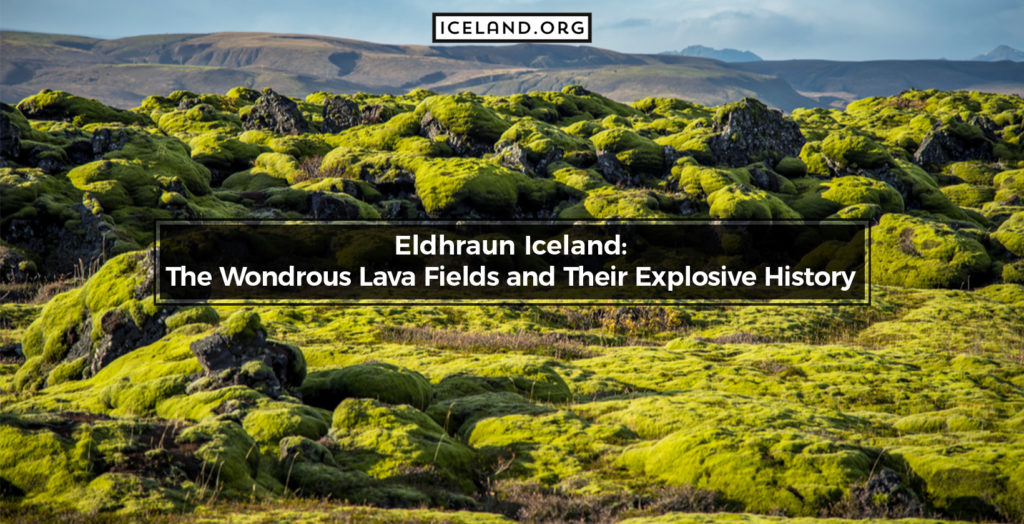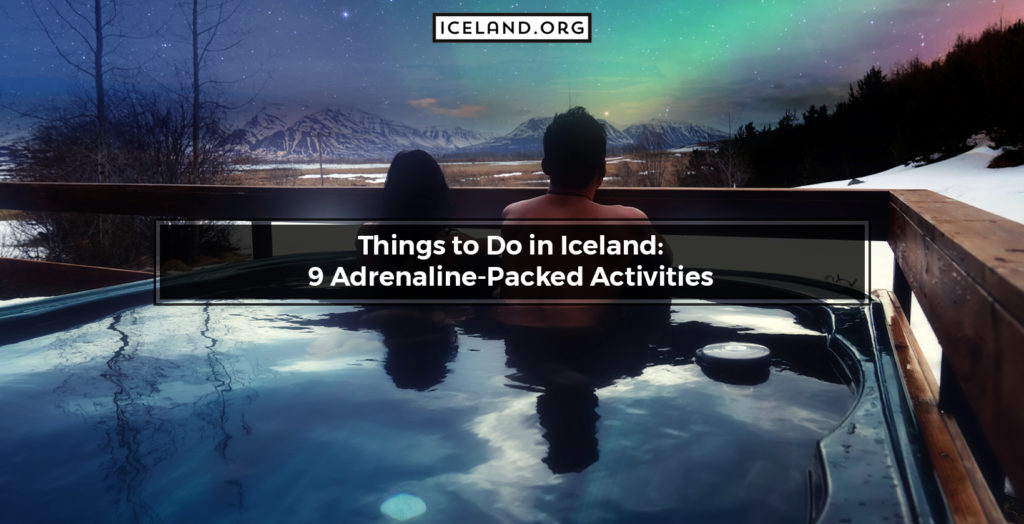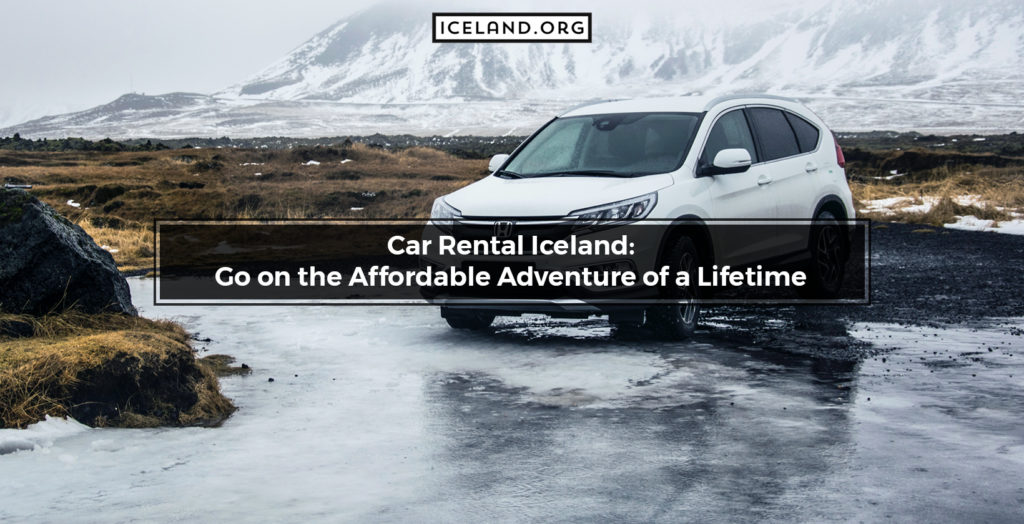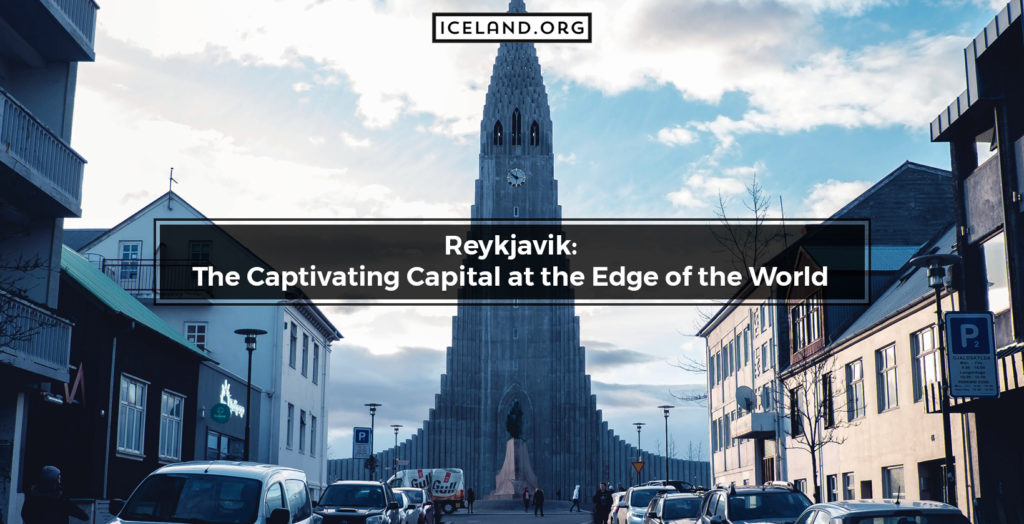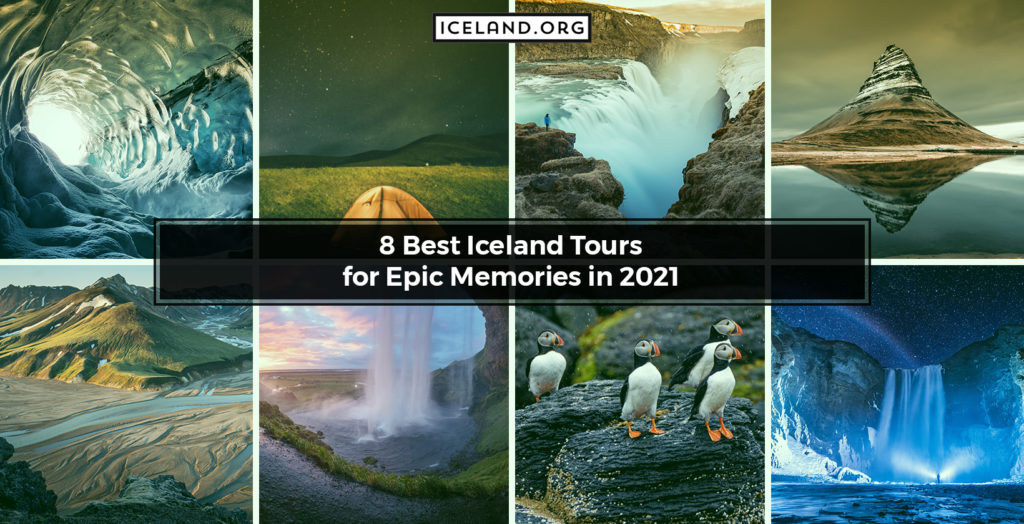Population 1999: 278.702.
Capital: Reykjavik.
President (since 1996): Mr. Ólafur Ragnar GRÍMSSON
Prime Minister (since 1993): Mr. Davíð ODDSSON
Currency: Icelandic kronurs (Ikr)(Rate of exchange, Jun. 2000: 1US $ = 77 Ikr.)
Total area: 39,756 square miles, slightly smaller than the State of Virginia.
Location: Island nation in North Atlantic, 5½ hrs. flight from New York City.
Form of Government: Republic since 17 Jun.1944. Independent since 1 Dec. 1918
Brief History of Iceland
 The first people known to have inhabited Iceland were Irish monks who settled there in the eight century, but left with the arrival of the pagan Norsemen, who systematically settled Iceland in the period 870-930 AD. Iceland was thus the last European country to be settled.
The first people known to have inhabited Iceland were Irish monks who settled there in the eight century, but left with the arrival of the pagan Norsemen, who systematically settled Iceland in the period 870-930 AD. Iceland was thus the last European country to be settled.
The main source of information about the settlement period in Iceland is the Landnamabok (Book of Settlements), written in the 12th century, which gives a detailed account of the first settlers. According to this book Ingolfur Arnarson was the first settler. He was a chieftain from Norway, arriving in Iceland with his family and dependents in 874. He built his farm in Reykjavik, the site of the present capital. During the next 60 years or so Viking settlers from Scandinavia, bringing some Celtic people with them, spread their homesteads over the habitable areas.
In the year 930, at the end of the Settlement period, a constitutional law code was accepted and the Althingi established. The judicial power of the Althingi was distributed between 4 local courts and a Supreme Court of sorts was conducted annually at the national assembly at Thingvellir.
 In the year 1000 Christianity was peacefully adopted by the Icelanders at the Althingi, which met for two weeks every summer, attracting a large proportion of the population. The first bishopric was established at Skalholt in South Iceland in 1056, and a second at Holar in the north in 1106. Both became the country’s main centers of learning.
In the year 1000 Christianity was peacefully adopted by the Icelanders at the Althingi, which met for two weeks every summer, attracting a large proportion of the population. The first bishopric was established at Skalholt in South Iceland in 1056, and a second at Holar in the north in 1106. Both became the country’s main centers of learning.
In the late tenth century Greenland was discovered and colonized by the Icelanders under the leadership of Erik the Red, and around the year 1000 the Icelanders were the first Europeans to set foot on the American continent, 500 years before Columbus, although their attempts to settle in the New World failed.
In 1262-1264 internal feuds, amounting to a civil war, led to submission to the king of Norway and a new monarchical code in 1271. When Norway and Denmark formed the Kalmar Union in 1397, Iceland fell under the sovereignty of the King of Denmark. 
After the “Golden Age” of independent Iceland had ended, things went from bad to worse. The Danish kings brought about the Reformation of the Church in 1551, which resulted in Danish control over the Church, and confiscation of its great wealth. They replaced the Hansa and English trade with an oppressive Danish trade monopoly, and established absolute monarchy in 1662, thus transferring all governing power to Copenhagen. While this arrangement was very profitable for the Danish Crown, these changes were disastrous for the Icelandic economy. Further problems arose in the food supply due to cooling of the climate during the 16th and 17th centuries.
The eighteenth century marked the most tragic age in Iceland’s history. In 1703, when the first complete census was taken, the population was approximately 50,000, of whom about 20% were beggars and dependents. From 1707 to 1709 the population sank to about 35,000 because of a devastating smallpox epidemic. Twice again the population declined below 40,000, both during the years 1752-57 and 1783-85, owing to a series of famines and natural disasters. 
At the end of the 18th century the Althingi had been dissolved and the old diocese replaced by one bishop residing in Reykjavik. As a consequence of the plight of the populace the trade monopoly was modified in 1783 and all subjects of the Danish king given the right to trade in Iceland. In 1843 the Althingi was reestablished as a consultative assembly. In 1854 foreign trade was given entirely free. In 1874, when Iceland celebrated the millennium of the first settlement, it received a constitution from the Danish king and control of its own finances.
In 1904 Iceland got home rule and finally in 1918 independence. Finally, on 17 June 1944, the Republic of Iceland was formally proclaimed at Thingvellir.
874-930: Iceland is settled, mainly from Norway but also from the Viking areas of the British Isles.
930: The Althingi is established – now the world’s oldest existing national assembly – at Thingvellir. Iceland’s republican system of government was unique in its day.
930-1030: “Saga Age”.
982: Erik (“the Red”) Thorvaldsson discovers Greenland.
1000: Christianity is adopted peacefully by a decision of the Althingi at Thingvellir. The Icelander Leif (“the Lucky”) Eriksson becomes the first European to set foot in America.
1003: Birth of Snorri Thorfinnsson on the East coast of North-America, the first European-American. He was the son of the Icelandic immigrants Thorfinnur Karlsefni Thordarson (Leif Eriksson’s brother-in law) and his wife Gudridur Thorbjornsdottir.
1030-1120: “Age of Peace”.
1120-1230: “Age of Writing”.
1230-1264: “Sturlung Age”.
1241: Snorri Sturluson is killed.
13th Century: “Golden Age” when the Icelandic Sagas are written. The Sagas include some of the classics of world medieval literature and are written in the ancient Viking language which is still spoken in Iceland today.
1262: Iceland becomes part of the Norwegian crown.
1380: Iceland, with Norway, becomes part of the Danish crown.
1402-1404: Black Death plague.
1537: Norway is dissolved as a state (until 1814) and becomes part of Denmark. Iceland comes directly under the King of Denmark.
1540-1550: The Reformation.
1602: Royal trade monopoly.
1783-1785: The disastrous Lakagigar eruption.
1787: Trade monopoly is extended to all Danish subjects.
1800: The Althingi is dissolved.
1818: The National Library is founded.
1843: The Althingi is re-established as a consultative body.
1854: Monopoly on foreign trade is entirely removed.
1863: The National Museum is founded.
1874: Millennium of the settlement of Iceland is celebrated at Thingvellir. A Constitution is granted by the King of Denmark.
1879: Jon Sigurdsson, the leader of the independence movement, dies.
1904: Home rule. Appointment of the first Icelandic government minister, Hannes Hafstein.
1911: The University of Iceland is founded.
1918: Act of Crown Union with Denmark, Iceland becomes an independent, sovereign state, with the Danish King as head of state.
1920: The Supreme Court is founded.
1930: Millennium of the establishment of the Althingi Parliament is celebrated at Thingvellir.
1940: Iceland is occupied by British forces.
1941: US forces take over the defense of Iceland. Iceland becomes the first foreign country where US troops are deployed before Pearl Harbor during the Second World War.
1944: June 17. The Republic of Iceland is established at Thingvellir, following a referendum in which 97% of the population voted in favor of cutting ties with the Danish Crown.
1945: The first international flight by an Icelandic aircraft.
1946: Iceland joins the United Nations.
1947: Iceland becomes a founding member of the OEEC (forerunner of OECD).
1949: Iceland joins NATO.
1950: Iceland joins Council of Europe. National Theater and Symphony Orchestra founded.
1951: A defense agreement is concluded between Iceland and the US.
1952: Iceland joins the Nordic Council. Fishery limits are extended to 4 miles.
1958: Fishery limits are extended to 12 miles.
1970: Iceland joins EFTA.
1971: Arrival of the first Icelandic manuscripts from Copenhagen.
1972: Fishery limits are extended to 50 miles.
1973: A volcanic eruption in Heimaey, the only inhabited island in the Westmann Islands.
1974: 1100th anniversary of the settlement of Iceland is celebrated at Thingvellir.
1975: Fishery limit are extended to 200 miles.
1986: Reykjavik celebrates its bicentenary. Reagan-Gorbachev Summit held in Reykjavik.
1994: 50th anniversary of the modern Icelandic Republic. The agreement on a European Economic Area (EEA) takes effect, giving Iceland full access to the internal market of the European Union (EU). Government
2000: Iceland celebrates the 1000-year anniversary of the adoption of Christianity
2000: Iceland celebrates the 1000-year anniversary of Leifur Eiriksson´s pioneering and historic voyage to North America.
Iceland has a written constitution and a parliamentary form of government. A president is elected by direct popular vote for a term of four years, with no term limit. Most executive power however rests with the Government, which is elected separately from the presidential elections every four years.
The Althingi is a legislative body of 63 members elected for a term of four years by a popular vote. Anyone who is eligible to vote can run for a Parliamentary seat, with the exception of the President and the judges of the Supreme Court. After every election, the President gives one of the parliamentary leaders of the political parties the authority to form a cabinet, usually of the largest party first. If he is not successful, the President will ask another political party leader to form a Government.
A cabinet of ministers stays in power until the next general election or a new government is formed. The ministers are sit in the Althingi, but if they have not been elected, they no not have the right to vote in parliament.
Iceland was settled by Norsemen from Scandinavia and Celts from the British Isles. Both the language and culture of Iceland were purely Scandinavian from the outset, but there are traces of Celtic influence in some of the Eddaic poems, in personal and place names and in the appearance of present-day Icelanders who have a higher percentage of the dark and red hair than the other Nordic nations.
The early blending of Nordic and Celtic blood may partly account for the fact that the Icelanders, alone of all the Nordic people, produced great literature in the Middle Ages. Immigration has been minimal since the first settlement, and there are no Inuits (Eskimos) in Iceland.
Iceland is the most sparsely populated country in Europe with an average of about seven inhabitants per square mile. Almost four-fifths of the country are uninhabited, the population being limited to a narrow coastal belt, valleys and the lowland plains in the south and southwest.
Around the year 1100 the population, then entirely rural, is estimated to have been about 70 – 80,000. Three times in the eighteenth century it sank below 40,000, as stated earlier, but by the year 1900 it had reached 78,000. In 1925 it had passed the 100,000 mark, in 1967 it reached 200,000 and is now over 270,000. The average life expectancy for men is 74 years and for women 80 years – one of the world’s highest averages.
In 1880 there were only three towns in Iceland, where 5% of the population lived. By 1920 about 43% of the population lived in towns and villages with more than 200 inhabitants. By 1984 there were 23 towns and 42 villages where 89.2% of the population lived, while only 10,8% lived in rural districts.
Icelandic is the national language and it has changed very little from the original tongue spoken by the Norse settlers. But English and Danish are widely spoken and understood. Icelandic has two letters of its own, Þ/þ and Ð/ð, which were used in old English. “Þ” is pronounced as “th” in “thing” and “Д is pronounced as the “th” in “them”.
By law, Icelanders must follow the ancient tradition of deriving their last name from the first name of their father (patronymic system). For example, if a man named Erik names his son Leif, his last name will be Eriksson (the son of Erik). His daughter Thordis would be named Thordis Eriksdaughter (actually Eiríksdóttir, the daughter of Erik). She would keep her own name even is she marries. For this reason, Icelanders always have to be referred to by their given names. The patronymic is never used alone. Icelanders say, for example, “the President of Iceland, Ólafur Ragnar Grímsson,” or even “President Ólafur,” but never “President Grímsson”. There is a limited number of Icelanders who do have family names.
The established church in Iceland is the Evangelical Lutheran Church. There are many Lutheran churches in Iceland. There is also a Catholic church in Reykjavik, and a number of churches for other groups. The breakdown is as follows – Church of Iceland: 88,7% ; Other Lutherans: 3,8% ; Roman Catholics: 3,5%; Others: 4%.
Literacy has been universal in Iceland since the end of the eighteenth century. In 1907 school attendance was made obligatory for all children aged 10-14. Before the age of ten they were generally taught at home. In 1946 compulsory school attendance was extended, and at present it covers the ages between seven and 16. Those who wish to continue their education either go to various specialized schools or to secondary schools.
Academic education in the full sense did not begin in Iceland until 1847 with the formation of a Theological Seminary. It was followed in 1876 by a Medical School and in 1908 by a School of Law. These three institutions were merged into one in 1911 when the University of Iceland was established. Later, a fourth Faculty of Philosophy was added, primarily dealing with Icelandic philology, history and literature. The university’s main building was opened in 1940.
Since World War II Iceland has enjoyed a high standard of living, comparable to that of the other Nordic countries. From 1901 to 1960 real national income rose ten-fold with an annual average rate of growth of just over 4 percent. During this period the national economy underwent dramatic changes, transforming from a subsistence economy into an exchange economy through rapid urbanization and other features of industrialization. Today, the living standard is among the best in the world and per capita income is comparable to that of the United States.
The quality of housing in Iceland is very high, while the road system in the countryside is comparatively poorer than in neighboring countries. This is mainly due to the large size of the country and the small population.
Fish and fish products constitute more than 70% of Iceland’s exports in goods and it is the most important industry. The continental shelf around Iceland, where the warm Gulf Stream and the cold currents from the Arctic meet, offers very favorable conditions for various kinds of marine life, and are extremely rich fishing grounds. The fishing grounds, which are Iceland’s main natural resources, require strict conservation, and fish catches are tightly controlled. The main species of fish are cod, haddock, saithe, redfish, herring and capelin.
Agricultural land in Iceland is mostly used for growing grass for the making of hay and silage as fodder for livestock. Sheep and dairy cattle make up the main livestock in Icelandic farming.
It is estimated that the potential total exploitable hydro-electric power in Iceland amounts to 64,000 Gwh p.a., of which 45,000 Gwh p.a. are considered to be economical. However, only 4200 Gwh p.a. were being utilized in 1990.
No one knows exactly how much geothermal power is available in Iceland but it is without much doubt tremendous. In 1990 the exploited capacity had reached about 5000 Gwh p.a., bringing 81% of the population geothermal heating for their houses. Power is therefore among the most important resources in Iceland. Presently aluminum accounts for about 11% of the country’s exports, while other manufacturing products account for about 12%, including ferro-silicon.
Sayings like “There is no weather in Iceland, only samples” or “If you don’t like the weather, just wait five minutes,” indicate the variability of the Icelandic climate. It is cool temperate and oceanic, influenced by the country’s location where the polar front separates air currents of polar and tropical origin. The weather is affected also by the confluence of two different ocean currents, the Gulf Stream flowing clockwise around the south and west coasts, and the East Greenland polar current curving southeastwards round the north and east coasts, which meet off the southeast coast. A third element affecting the climate is the Arctic drift ice brought by the polar current, which occasionally blocks the north and east coasts in late winter and early spring. The advance of drift ice causes a considerable fall in the temperature and usually some decrease in precipitation. Fluctuations in average annual temperature are more pronounced in Iceland than most other places. In Britain, for instance, the deviation is only one-third of that in Iceland.
For two to three months in summer there is continuous daylight in Iceland, and early spring and late autumn enjoy long twilight’s. The really dark period (three to four hours daylight) lasts from about mid-November until the end of January.
 The Icelandic Coat of Arms (as seen on page 1) is a silvery cross in a sky-blue field with a fiery red cross in the silvery one. The shield-bearers are the four guardian spirits of the land: A bull to the right of the shield, a giant to the left, a vulture to the right above the bull, and a dragon to the left above the giant. The shield rests on a slab of basalt.
The Icelandic Coat of Arms (as seen on page 1) is a silvery cross in a sky-blue field with a fiery red cross in the silvery one. The shield-bearers are the four guardian spirits of the land: A bull to the right of the shield, a giant to the left, a vulture to the right above the bull, and a dragon to the left above the giant. The shield rests on a slab of basalt.
 The Icelandic National Flag is sky-blue (Color: SCOTDIC No. 693009) with a snow-white (Color: SCOTDIC No. 95) cross and fiery red (Color: SCOTDIC Iceland Flag Red) cross in the white cross. The arms of the crosses extend entirely to the edges of the flag, and their width is 2/9th, but the red cross is 1/9th of the width of the flag. The blue field is thus divided into rectangular squares: Those nearest to the flag-pole are equilateral and the outer squares are equally wide, but twice as long. The proportional figures for the width and length of the flag are 18:25.
The Icelandic National Flag is sky-blue (Color: SCOTDIC No. 693009) with a snow-white (Color: SCOTDIC No. 95) cross and fiery red (Color: SCOTDIC Iceland Flag Red) cross in the white cross. The arms of the crosses extend entirely to the edges of the flag, and their width is 2/9th, but the red cross is 1/9th of the width of the flag. The blue field is thus divided into rectangular squares: Those nearest to the flag-pole are equilateral and the outer squares are equally wide, but twice as long. The proportional figures for the width and length of the flag are 18:25.
Iceland is richer in hot springs and high-temperature activity than any other country in the world. High-temperature activity is limited certain fields. They are characterized by steam vents, mud pools, and precipitation of sulfur.
The main high-temperature areas are Torfa glacier east of Hekla and Grims lakes in the Vatna glacier. Next in order of size are Hengill near Reykjavik, which is now being exploited to provide hot water for space heating in the capital, Kerlingar mountains, Náma mountain, Kverk mountains and Krisu bay. The total power output of the Torfa glacier area, which is the largest, is estimated to be equivalent to 1,500 megawatts. Some of the high-temperature areas have workable sulfur deposits.
Hot springs are found all over Iceland, but they are rare in the eastern basalt area. There are about 250 low-temperature geothermal areas with a total of about 800 hot springs. The average temperature of their water is 75° Celsius (167° F). The biggest hot spring in Iceland, Deildartunguhver, has a flow of 150 litters (40 gallons) of boiling water per second. Some of the hot springs are spouting springs or geysers, the most famous being Geysir in Haukadalur in south Iceland, from which the international word geyser is derived. It ejects a water column to a height of about 180 feet, but has had limited activity in recent years. Another renowned geyser in the same field as Geysir is Strokkur, which spouts every few minutes. Springs charged with carbon dioxide are to be found in some districts, mainly in Snaefellsnes, but have not yet been utilized. Since the last Hekla eruption, springs rising from under the new lava have also been found to be charged with carbon dioxide.
Among the most distinctive features of Iceland are its glaciers, which cover over 4,500 square miles (11,800 km²) or 11,5% of the total area of the country. During the past few decades, however, they have markedly thinned and retreated owing to a milder climate, and some of the smaller ones have all but vanished.
By far the largest of the glacier caps is Vatna glacier in southeast Iceland with an area of 3,240 square miles (8,400 km²), equal in size to all the glaciers on the European mainland put together. It reaches a thickness of 3,000 feet (1 km). One of its southern outlets, Breidamerkur glacier, descends to sea level.
Avalanches are common in the northwest, north and east, where the steep mountain slopes, covered with deep snow, threaten the inhabited areas. In many of those areas farms have been destroyed and people killed by avalanches. A disaster of this kind occurred in the town of Neskaupsstadur on the East coast in December 1974, when an avalanche destroyed a large fish-processing plant and some houses, killing thirteen people. And on January 17, 1995 an avalanche killed 14 people in the small town of Sudavik on the West coast.
Icelandic Pancakes (or Crepes) with Whipped Cream Batter: 3 cups flour, 4 eggs, 3 tbs. butter (melted), 1/2 tsp. baking soda, 1/2 tsp. baking powder, 1 tsp. vanilla essence, 2 1/2-3 cups milk.
Directions: Separate egg whites and beat until stiff. Mix together all other ingredients and add the egg whites lastly. Bake paper thin on a hot cast-iron griddle (about 9 inches in diameter). Spread with preserves, jam or jelly, one tablespoon whipped cream. Fold into triangles. Serve with afternoon coffee or as desert. (Traditional)
Fried Crullers (Kleinur) Batter: 4 cups flour, 3 tsp. baking powder, 1 tsp. hartshorn salt (Ammonium Carbonate), 2 tsp. cardamom, 1/2 cup margarine, 4 1/2 tbs. sugar, 7 tbs. milk, 1 egg.
Directions: Mix together flour, baking powder, hartshornsalt and cardamom. Add the margarine, sugar, egg and the milk. Work up into dough. Roll out the dough to about 1/8 inch thick. Cut into strips about 3/4 inch wide and about 3 inch long in a slantwise direction, using a pastry wheel and ruler. Make a slit in the center of each cruller and pull one pointed end through. Lower the crullers, one at a time, into hot fat and fry them until golden brown (deep fat frying). Lift them out and let them drain on a paper-towel. Serve hot or cold.
Other Information To rent a video on Iceland, please contact: Audience Planners, 5341 Derry Ave., Suite Q, Agoura Hills, CA 91301. Tel: (818) 865-1233.
For tourist information please contact: The Iceland Tourist Board, 655 Third Avenue, New York, NY 10017. Tel: (212) 949-2333. Fax: (212) 983-5260.
For trade and investment information, please contact: The Trade Council of Iceland, 800 Third Ave, 36th floor, New York, NY 10022. Tel: (212) 593-2700. Fax: (212) 593-6269.
For Pen-Pals, please write to the daily paper MORGUNBLADID, Kringlunni 1, 103 Reykjavik, Iceland. Tel: +354 569-1100. Fax: +354 569-1222.
